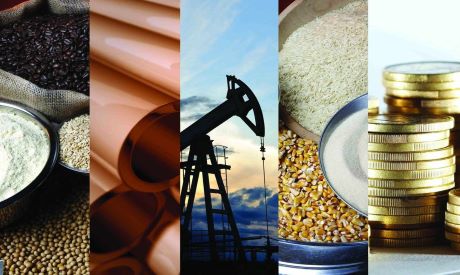China’s supportive but no panacea stimulus measures bodes ill for the metals complex
Global commodities
Whilst Chinese policymakers continue to roll out supportive monetary, fiscal and property measures in a still “pro-growth” mindset, the magnitude of the stimulus measures remains smaller than previous easing cycles. As the world’s largest consumer of base metals, China’s supportive but no panacea stimulus measures matters for commodities. The most significant sell-off has been in iron ore. China’s steel industry is vast, buying the bulk of seaborne iron ore cargoes, and its vitality (or lack of) sets the tone for iron ore. Iron ore’s benchmark active SGX contract has fallen north of 10% from its late July high, now standing just above the USD100/MT level – with momentum that iron ore could now test price parity with rising crude oil (first time since 2019). More broadly, while we agree for now on the broad observation for a muted metals impact from tepid Chinese stimulus measures, remaining bearish on stronger H2 2023 supply metals (nickel, zinc and iron ore), we do see a more bullish path developing for copper. Indeed, copper’s importance to the energy transition is clear – no commodity in the world is better positioned than copper because there is no other chemical element globally that is a better conductor of electricity, which sits at the heart of the clean energy transition (see here and here).
Energy
Oil is taking a run at this year’s highs on simmering geopolitical Black Sea risks, alongside tightening micro fundamentals with a market in deficit and a less pessimistic global macro outlook. Meanwhile, European natural gas (TTF) prices jumped in dramatic fashion this week to the most since March 2022, in a sign that market sentiment remains very fragile to any prospect of future supply disruptions, despite higher-than-average gas inventory levels. Bullish drivers include declining LNG imports to Europe and potential delays in Norway’s seasonal maintenance – critically, bullish option flows and the return of buyers in natural gas after a long hiatus suggest more gains ahead.
Base metals
The base metals complex continues to remain caught between disappointing growth momentum in China, a manufacturing slowdown in developed markets, and accelerating supply conditions for several metals (notably nickel and zinc). Underlying this has been a degree of differentiation in micro conditions for metals – those most tied to China’s green economy (centrally copper) have displayed outperforming demand trends and falling inventories, whilst those tied to either China early cycle construction or developed markets manufacturing (aluminium, nickel and zinc) have seen demand environments far more aligned with the broader macro trends.
Precious metals
Gold’s rough run continues to linger as the US dollar rallies amid concerns over weak Chinese economic data, as well as the health of the US banking sector (Moody’s downgraded 10 small and mid-sized US lenders and said it may do the same with a handful of major firms).
Bulk commodities
Global coal prices have fluctuated within a tight range ~USD130/MT, as typhoons across Asia and Japanese nuclear power restarts have moderated the supportive impact of ongoing heat waves on coal demand. We anticipate the sustained impact from higher nuclear generation in Japan, as well as prolonged coal-to-gas substitution in Europe, to help keep global coal prices near current levels despite Asian temperatures forecast to remain warmer-than-average for the remainder of the summer period.
Agriculture
Grain prices are holding onto recent gains as traders weigh a potential escalation in animosities between Russia and Ukraine that may threaten critical Black Sea exports. Wheat is still ~14% lower this year as Northern Hemisphere harvests replenish supplies in some major shippers.
Core indicators
Price performance and forecasts, flows, market positioning, timespreads, futures, inventories, storage and products performance are covered in the report.



